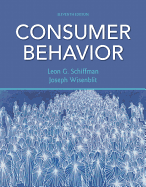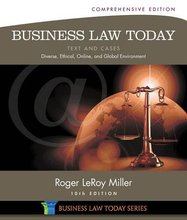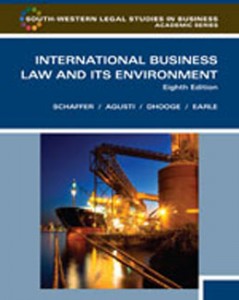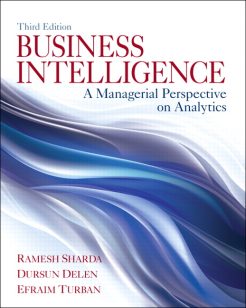Description
***THIS IS NOT THE ACTUAL BOOK. YOU ARE BUYING the Test Bank in e-version of the following book***
– The Test Bank is what most professors use an a reference when making exams for their students, which means there’s a very high chance that you will see a very similar, if not exact the exact, question in the test!
– The file is either in pdf, doc, rtf or zipped in the package and can easily be read on PCs and Macs.
– Delivery is INSTANT. You can download the files IMMEDIATELY once payment is done.
We also faced similar difficulities when we were students, and we understand how you feel.
But now, with the Test bank for Consumer Behavior 11e by Schiffman 0132544369, you will be able to
* Anticipate the type of the questions that will appear in your exam.
* Reduces the hassle and stress of your student life.
* Improve your studying and also get a better grade!
* Get prepared for examination questions.
* Can save you time and help you understand the material.
This is the quality of service we are providing and we hope to be your helper.
Delivery is in the next moment. Test Bank is accurate.
If you have any questions, or would like a receive a sample chapter before your purchase, please contact us at inquiry@testbankcorp.com
Consumer Behavior, 11e (Schiffman/Kanuk)
Chapter 3 Consumer Motivation and Personality
1) The driving force within individuals that impels them to action is known as ________.
A) a goal
B) tension
C) motivation
D) a need
E) personality
Answer: C
Diff: 1
Skill: Concept
Learning Obj: 3.1: To understand the dynamics of motives, needs and goals, and how they shape consumer behavior.
Learning Outcome: 1: Define consumer behavior and describe its influence on marketing practices
AACSB: Reflective thinking
2) Motivation is produced by a state of tension, which exists as the result of ________.
A) peer pressure
B) environmental forces
C) satisfied desires
D) unrealized desires
E) unfulfilled needs
Answer: E
Diff: 1
Skill: Concept
Learning Obj: 3.1: To understand the dynamics of motives, needs and goals, and how they shape consumer behavior.
Learning Outcome: 1: Define consumer behavior and describe its influence on marketing practices
AACSB: Reflective thinking
3) Successful marketers define their markets in terms of ________.
A) the product the company has decided to produce
B) the lowest price for which a particular product can be manufactured
C) the needs they presume to satisfy
D) the ethnicity of their primary consumers
E) the geographic location of their primary consumers
Answer: C
Diff: 2
Skill: Concept
Learning Obj: 3.1: To understand the dynamics of motives, needs and goals, and how they shape consumer behavior.
Learning Outcome: 1: Define consumer behavior and describe its influence on marketing practices
AACSB: Reflective thinking
4) When Procter and Gamble defines its business as “providing branded products and services of quality and value that improve the lives of the world’s consumers,” they are using a ________.
A) need-focused definition
B) product-oriented definition
C) motivation-oriented definition
D) personality-oriented definition
E) production-oriented definition
Answer: A
Diff: 1
Skill: Application
Learning Obj: 3.1: To understand the dynamics of motives, needs and goals, and how they shape consumer behavior.
Learning Outcome: 1: Define consumer behavior and describe its influence on marketing practices
AACSB: Application of knowledge
5) The physiological needs for food, water, and air are called ________ needs.
A) secondary
B) innate
C) acculturated
D) psychogenic
E) acquired
Answer: B
Diff: 2
Skill: Concept
Learning Obj: 3.1: To understand the dynamics of motives, needs and goals, and how they shape consumer behavior.
Learning Outcome: 1: Define consumer behavior and describe its influence on marketing practices
AACSB: Reflective thinking
6) Needs that we learn in response to our parents, social environment, and interactions with the environment are called ________ needs.
A) primary
B) biogenic
C) acculturated
D) psychological
E) innate
Answer: D
Diff: 2
Skill: Concept
Learning Obj: 3.1: To understand the dynamics of motives, needs and goals, and how they shape consumer behavior.
Learning Outcome: 1: Define consumer behavior and describe its influence on marketing practices
AACSB: Reflective thinking
7) ________ are the sought-after results of motivated behavior.
A) Motivations
B) Goals
C) Rewards
D) Behaviors
E) Targets
Answer: B
Diff: 1
Skill: Concept
Learning Obj: 3.1: To understand the dynamics of motives, needs and goals, and how they shape consumer behavior.
Learning Outcome: 1: Define consumer behavior and describe its influence on marketing practices
AACSB: Reflective thinking
8) ________ are outcomes that consumers seek in order to fulfill their physiological and psychological needs.
A) Broad-spectrum goals
B) Objective goals
C) Generic goals
D) Subjective goals
E) Product-oriented goals
Answer: C
Diff: 1
Skill: Concept
Learning Obj: 3.1: To understand the dynamics of motives, needs and goals, and how they shape consumer behavior.
Learning Outcome: 1: Define consumer behavior and describe its influence on marketing practices
AACSB: Reflective thinking
9) ________ are sought outcomes to be achieved by using a given product or service.
A) General goals
B) Objective goals
C) Generic goals
D) Subjective goals
E) Product-specific goals
Answer: E
Diff: 1
Skill: Concept
Learning Obj: 3.1: To understand the dynamics of motives, needs and goals, and how they shape consumer behavior.
Learning Outcome: 1: Define consumer behavior and describe its influence on marketing practices
AACSB: Reflective thinking
10) Barry wants a sandwich for lunch. Tom wants a turkey sandwich with lettuce, tomato, and mayonnaise from Subway. Barry has a(n) ________, whereas Tom has a(n) ________.
A) generic goal; product-specific goal
B) objective goal; subjective goal
C) product-specific goal; objective goal
D) subjective goal; generic goal
E) product-specific goal; generic goal
Answer: A
Diff: 2
Skill: Application
Learning Obj: 3.1: To understand the dynamics of motives, needs and goals, and how they shape consumer behavior.
Learning Outcome: 1: Define consumer behavior and describe its influence on marketing practices
AACSB: Application of knowledge
11) Jill gets good grades because her parents will punish her if she doesn’t receive at least a 3.5 GPA. Julia gets good grades because she likes the sense of accomplishment she feels when she gets a straight-A report card. Jill’s goal is referred to as a(n) ________, whereas Julia’s goal is referred to as a(n) ________.
A) approach object; avoidance object
B) avoidance object; defensive object
C) positive object; negative object
D) avoidance object; approach object
E) physical object; psychological object
Answer: D
Diff: 3
Skill: Application
Learning Obj: 3.1: To understand the dynamics of motives, needs and goals, and how they shape consumer behavior.
Learning Outcome: 1: Define consumer behavior and describe its influence on marketing practices
AACSB: Application of knowledge
12) A negative goal is one from which behavior is directed away, and is often referred to as a(n) ________.
A) declining object
B) approach object
C) interactive object
D) autonomous object
E) avoidance object
Answer: E
Diff: 2
Skill: Concept
Learning Obj: 3.1: To understand the dynamics of motives, needs and goals, and how they shape consumer behavior.
Learning Outcome: 1: Define consumer behavior and describe its influence on marketing practices
AACSB: Reflective thinking
13) Needs and goals are ________; neither exists without the other.
A) independent
B) interdependent
C) interactive
D) autonomous
E) mutually exclusive
Answer: B
Diff: 2
Skill: Concept
Learning Obj: 3.1: To understand the dynamics of motives, needs and goals, and how they shape consumer behavior.
Learning Outcome: 1: Define consumer behavior and describe its influence on marketing practices
AACSB: Reflective thinking
14) The category of shopping motivations where consumers do not have an urgent-product need in mind, but go shopping for the personal enjoyment of shopping is known as ________.
A) recreational shopping
B) activity-specific shopping
C) fill-in shopping
D) demand-specific shopping
E) self-image shopping
Answer: A
Diff: 3
Skill: Concept
Learning Obj: 3.1: To understand the dynamics of motives, needs and goals, and how they shape consumer behavior.
Learning Outcome: 1: Define consumer behavior and describe its influence on marketing practices
AACSB: Reflective thinking
15) Individuals who successfully achieve their goals usually set new and higher goals for themselves; that is, they raise their ________.
A) levels of self-awareness
B) social status
C) levels of aspiration
D) biogenic needs
E) motivational state
Answer: C
Diff: 2
Skill: Concept
Learning Obj: 3.1: To understand the dynamics of motives, needs and goals, and how they shape consumer behavior.
Learning Outcome: 1: Define consumer behavior and describe its influence on marketing practices
AACSB: Reflective thinking
16) Products and services are often evaluated by the size and direction of the gap between ________.
A) consumer expectations and objective performance
B) the target market and the income of the average consumer
C) consumer expectations and product cost
D) the cost of production and the price at sale
E) the price of the final product and the company’s marketing expenditures
Answer: A
Diff: 2
Skill: Concept
Learning Obj: 3.1: To understand the dynamics of motives, needs and goals, and how they shape consumer behavior.
Learning Outcome: 1: Define consumer behavior and describe its influence on marketing practices
AACSB: Reflective thinking
17) A(n) ________ can take the place of a primary goal when an individual cannot attain a specific goal or type of goal that is expected to satisfy certain needs.
A) specific goal
B) biogenic goal
C) substitute goal
D) secondary goal
E) objective goal
Answer: C
Diff: 3
Skill: Concept
Learning Obj: 3.1: To understand the dynamics of motives, needs and goals, and how they shape consumer behavior.
Learning Outcome: 1: Define consumer behavior and describe its influence on marketing practices
AACSB: Reflective thinking
18) Failure to achieve a goal often results in feelings of ________.
A) achievement
B) aspiration
C) self-awareness
D) personal promotion
E) frustration
Answer: E
Diff: 1
Skill: Concept
Learning Obj: 3.1: To understand the dynamics of motives, needs and goals, and how they shape consumer behavior.
Learning Outcome: 1: Define consumer behavior and describe its influence on marketing practices
AACSB: Reflective thinking
19) Aggression and rationalization are examples of ________ that people sometimes adopt to protect their egos from feelings of failure when they do not attain their goals.
A) fulfillment mechanisms
B) defense mechanisms
C) substitute goals
D) subjective criteria
E) secondary behaviors
Answer: B
Diff: 2
Skill: Concept
Learning Obj: 3.1: To understand the dynamics of motives, needs and goals, and how they shape consumer behavior.
Learning Outcome: 1: Define consumer behavior and describe its influence on marketing practices
AACSB: Reflective thinking
20) An individual may redefine a frustrating situation by assigning blame for his or her own failures and inabilities on other objects or persons. This is known as ________.
A) aggression
B) rationalization
C) withdrawal
D) projection
E) regression
Answer: D
Diff: 2
Skill: Concept
Learning Obj: 3.1: To understand the dynamics of motives, needs and goals, and how they shape consumer behavior.
Learning Outcome: 1: Define consumer behavior and describe its influence on marketing practices
AACSB: Reflective thinking
21) People sometimes resolve frustration by inventing plausible reasons for being unable to attain their goals or deciding that the goal is not really worth pursuing. This is known as ________.
A) aggression
B) rationalization
C) withdrawal
D) projection
E) regression
Answer: B
Diff: 2
Skill: Concept
Learning Obj: 3.1: To understand the dynamics of motives, needs and goals, and how they shape consumer behavior.
Learning Outcome: 1: Define consumer behavior and describe its influence on marketing practices
AACSB: Reflective thinking
22) According to Murray’s list of psychogenic needs, need for dominance/power may conflict with ________.
A) needs associated with inanimate objects
B) need for prestige/ambition
C) need for affiliation/affection
D) need for achievement
E) need for information
Answer: C
Diff: 3
Skill: Concept
Learning Obj: 3.2: To understand motivation theories and their applications to consumer behavior.
Learning Outcome: 1: Define consumer behavior and describe its influence on marketing practices
AACSB: Application of knowledge
23) According to Maslow’s hierarchy of needs, protection, order, and stability are examples of ________.
A) self-actualization needs
B) egoistic needs
C) social needs
D) safety and security needs
E) physiological needs
Answer: D
Diff: 2
Skill: Concept
Learning Obj: 3.2: To understand motivation theories and their applications to consumer behavior.
Learning Outcome: 1: Define consumer behavior and describe its influence on marketing practices
AACSB: Reflective thinking
24) Savings accounts, insurance policies, and education are all means by which individuals satisfy the need for ________.
A) self-actualization
B) self-esteem
C) safety and security
D) social acceptance
E) self-fulfillment
Answer: C
Diff: 2
Skill: Application
Learning Obj: 3.2: To understand motivation theories and their applications to consumer behavior.
Learning Outcome: 1: Define consumer behavior and describe its influence on marketing practices
AACSB: Application of knowledge
25) According to Maslow, ________ are the first and most basic level of human needs.
A) egoistic needs
B) physiological needs
C) self-actualization needs
D) safety and security needs
E) social needs
Answer: B
Diff: 1
Skill: Concept
Learning Obj: 3.2: To understand motivation theories and their applications to consumer behavior.
Learning Outcome: 1: Define consumer behavior and describe its influence on marketing practices
AACSB: Reflective thinking
26) Almost all personal care and grooming products, as well as most clothes, are bought to satisfy ________.
A) growth needs
B) physiological needs
C) social needs
D) self-actualization needs
E) safety and security needs
Answer: C
Diff: 3
Skill: Application
Learning Obj: 3.2: To understand motivation theories and their applications to consumer behavior.
Learning Outcome: 1: Define consumer behavior and describe its influence on marketing practices
AACSB: Application of knowledge
27) Egoistic needs can take either an inward or an outward orientation, or both. Inwardly directed ego needs reflect an individual’s need for ________.
A) reputation
B) prestige
C) self-esteem
D) recognition from others
E) status
Answer: C
Diff: 2
Skill: Concept
Learning Obj: 3.2: To understand motivation theories and their applications to consumer behavior.
Learning Outcome: 1: Define consumer behavior and describe its influence on marketing practices
AACSB: Reflective thinking
28) Egoistic needs can take either an inward or an outward orientation, or both. Outwardly directed ego needs reflect an individual’s need for ________.
A) self-acceptance
B) personal satisfaction with a job well done
C) reputation
D) independence
E) self-esteem
Answer: C
Diff: 2
Skill: Concept
Learning Obj: 3.2: To understand motivation theories and their applications to consumer behavior.
Learning Outcome: 1: Define consumer behavior and describe its influence on marketing practices







Reviews
There are no reviews yet.